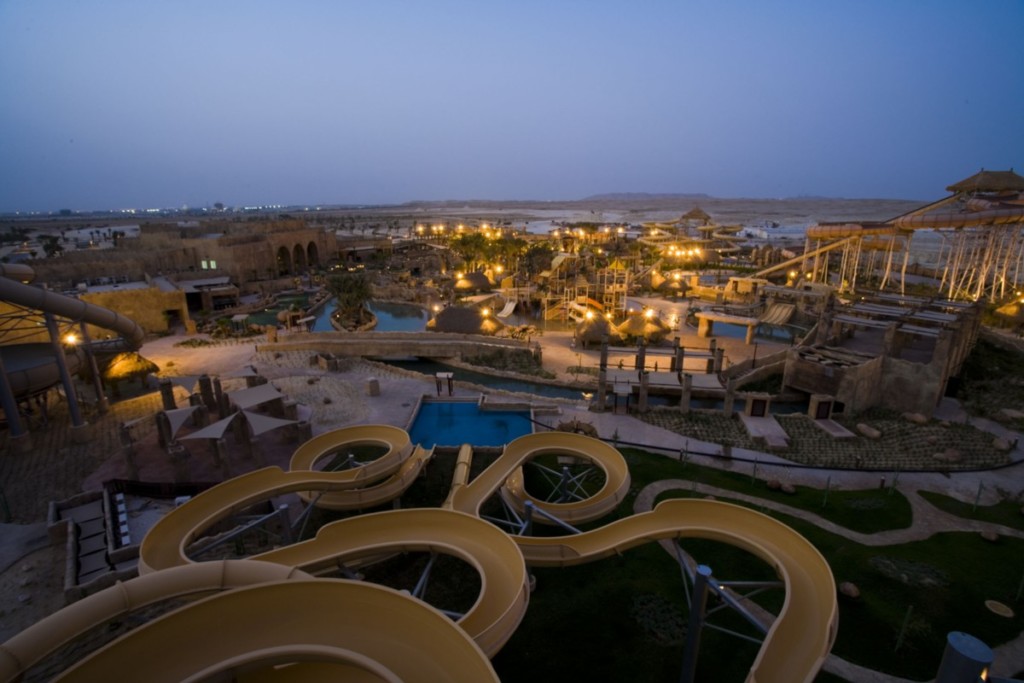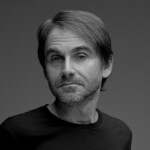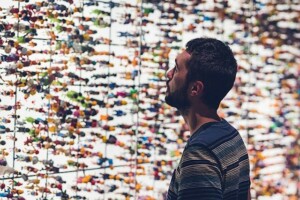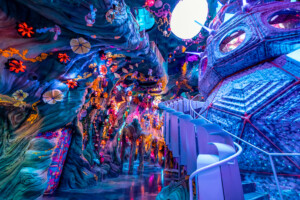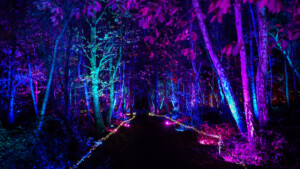The Lost Paradise of Dilmun Waterpark, Bahrain
 By Tricia M. McCunney, Hill International, Inc.
By Tricia M. McCunney, Hill International, Inc.
Matthew Priddy, Tim J. Delaney and Claus Frimand discuss the roller coaster ride of theme park design and construction.
Managing the design and construction of a theme park can be a thrill ride in itself, full of unexpected twists and turns, highs and lows. And, like the world’s most popular roller coasters, no two projects are exactly alike.
It’s that thrill that keeps Matthew Priddy (right) and the relatively small pool of theme park-industry experts enthralled, traveling the world to help owners design and build cutting-edge entertainment destinations.
Matthew Priddy
 Matthew Priddy
Matthew Priddy
Priddy, a Hill International vice president, has spent much of the last three decades overseeing the design and construction of some of the world’s most notable attractions, including such high-profile Disney projects as EPCOT Center, the Disney MGM Studio tour, Animal Kingdom, and Disneyland Paris. Priddy’s 30-plus-year career also includes museums, theaters and themed retail and residential facilities, including Club Disney, the Disney flagship stores and the Disney Magic and Wonder cruise ships. Before that, he taught courses in theater technology at the University of California at Los Angeles.
The ride, Priddy admits, has always been thrilling. He doesn’t expect that to change. “Theme parks are unlike any other type of project and are probably the most difficult to design and construct, ” he said. “They incorporate nearly every facet of construction—entertainment, retail and commercial, residential, food service, infrastructure, mechanical and electrical, control systems. They are cities unto themselves, and need to comfortably accommodate thousands of employees and thousands of visitors every day.”
And, no two parks are alike, Priddy added. “Every theme park is unique. We rarely do the same thing twice.”
Tim J. Delaney
 Tim J. Delaney (left), head of Tim J. Delaney Design, Inc. in southern California, agreed. Delaney has designed attractions around the world, from southern California to France, Korea, Hong Kong and Japan. “Theme parks present very unique challenges because their construction is not a process of duplication. Hotel or office building projects base their economics on the repetition of floors. Conversely, theme parks are challenging because the design demands that every building, every façade, every sign, every walkway and architectural detail is unique, ” Delaney said.
Tim J. Delaney (left), head of Tim J. Delaney Design, Inc. in southern California, agreed. Delaney has designed attractions around the world, from southern California to France, Korea, Hong Kong and Japan. “Theme parks present very unique challenges because their construction is not a process of duplication. Hotel or office building projects base their economics on the repetition of floors. Conversely, theme parks are challenging because the design demands that every building, every façade, every sign, every walkway and architectural detail is unique, ” Delaney said.
“Theme parks are unique in every way. They require story development and design to create the themes. Architectural details can’t be duplicated or repeated, and materials and finishes must have variety to create interesting ‘places, ’ Delaney continued. “Also, varieties of architectural themes must make sense, and hand-created paint finishes are a must.”
Behind those beautiful, evocative facades and eye-popping special effects are massive electro-mechanical systems controlled by cutting-edge computer systems. “The type and amount of technology also sets theme park projects apart from other projects, like office buildings, that have more static environments” Priddy said.
Claus Frimand

“To start with, a theme park takes a lot more input from the user than a hotel or office building.”
The uniqueness of the projects can drive up costs and blow even the most detailed critical path, creating a roller coaster ride that no one likes.
“Planning, planning, planning is essential. All of the time and effort put in early in the process comes back ten-fold later, ” Frimand said. “Often, developers want to get started immediately, and convincing them to spend a little more time and money in the beginning can often be a challenge. But, good planning and the right people in the early stages of a project can help guarantee huge savings in the construction phase, and better profit in the long run.”
Best Practice
The ideal project management team for theme park projects should be both rooted in experience and agile enough to respond quickly to each project’s unique pitfalls. “Every theme park is unique and every project is unique. The parks aren’t cookie-cutter, and you need a project management team that recognizes that, ” Priddy said.
Because few individuals and companies possess the skillsets that are essential to theme park projects, the pool of talent is relatively small. Priddy, Delaney and Frimand have worked together for nearly three decades. They know well their own strengths, and the strengths of contractors and specialty subcontractors in the field.

Parque Warner, Madrid
While Disney and its competitors have long relied upon professional consulting firms to help manage their capital projects, convincing industry upstarts of the need for an extra layer of management isn’t always a walk in the park.
“Educating the client in the benefits of project management is our first step and is, in many ways, the most important, ” Priddy said. “A good management team helps both the client and the entire team understand the vision, ensures that proper, comprehensive business planning is done, helps cast the right team of consultants and helps manage the potentially disruptive changes that are inherent in this type of project.”
Business planning, for example, should include a feasibility study, guest demographics, guests’ per-capita spending capability, annual attendance projections, the entry price, food and beverage provision and retail space, operating and maintenance costs, a comprehensive business plan, and the budget and level of investment, Priddy explained.
Once those details have been worked out, the project management team can begin devising a detailed scope of work and critical path-based schedule for all elements of the project, including the development of new or emerging technologies.

Cirque du Soleil
“Many [theme park] projects have huge cost overruns because they try to use timelines from conventional construction projects, ” Frimand said.
“Often, developers’ approach to [a schedule or budget overrun] was to just throw more cheap labor at it, but armies of unskilled workers is not the solution. Our challenge is to educate the developer that proper planning and project management are needed in order to get good results, ” Frimand added.
Managing a complex design and construction schedule that stretches over months or years and incorporates the work of thousands can be daunting. But not impossible, Priddy said.
“Because these types of projects are so unique, you have to be able to manage the unexpected, ” Priddy said. “A good project manager, with the right amount of experience, understands that managing the unexpected really entails constant vigilance, hands-on management, and open communication. You need a cohesive team that isn’t afraid of pointing out ‘hairballs’ or delivering bad news when it’s needed.”
Effectively managing intricate project schedules and increasingly tight budgets becomes even more challenging when working at an existing park that is expanding. Work must proceed without disrupting patron or their experiences.

The Wheel of Brisbane
Emerging Markets
While Disney, Universal and other U.S. and European clients are continually upgrading, expanding and diversifying to meet changing tastes, theme parks are relatively new concepts in other parts of the world. China, Southeast Asia and many of the Commonwealth of Independent States formerly ruled by Soviet Union are planning or building their own theme parks, designed to attract and entertain a growing middle class that has a larger collective pocketbook than ever before.
“We’re seeing emerging markets in China, of course, and in Vietnam and in the CIS countries with oil economies, ” said Bruce Schlaitzer, a Hill senior vice president with 35 years of globe-trotting experience. Schlaitzer added that while damped economies in the Middle East have put some projects on hold, the well isn’t completely dry. “There is some speculation that Abu Dhabi may bring in Disney as it competes for the tourist dollar, ” he said.
Frimand, who heads ProFun’s Southeast Asia office, has his sights set on the Far East. “There is no doubt that, right now, Asia is where it’s all happening, ” he said. “For the next decade, you will see steady growth all over Asia, including Southeast Asia and India.”

A‘Famosa Resort, Malaysia
Theme parks and other entertainment venues are a natural progression in Asia’s development, Delaney explained. “China and Asia are clearly the growth areas for theme park development. With changes in culture and society that are giving people more free time, the demand to ‘entertain’ them is becoming more of a priority, ” he said.
Different cultures demand different designs, all of the executives said. Long gone are the days when an American theme park could be duplicated elsewhere. Earlier attempts at doing just that were largely unsuccessful, they said. Today, theme parks are designed and constructed according to each country or region’s culture, collective ideology, history and social norms.
“On the design side, we see a better understanding of the cultural differences, ” Frimand added. “Some of the larger [theme park] brands understand that it’s important to cater to local preferences and habits.”
Tailoring a park’s design and offerings to its locale can contribute to its ultimate success. Successful design and construction of such parks demands similar sensitivity. “A good project management team understand the intricacies, demographics and culture a specific country and culture well before planning begins, ” Priddy said.
Chinese families, for example, differ vastly from their American counterparts in the experiences they seek when entering a theme park. “Most Chinese families visit as a family, and look for rides and other attractions that the whole family can enjoy together, ” Priddy said. Picnic areas, tamer rides and family-friendly shows, movies and other attractions help them do that. Because Asia’s climate is often hot, humid and rainy, theme parks there offer lots of covered areas.

A‘Famosa Water Theme Park, Malaysia
The Future
Back in the U.S., patrons seek ever-increasing thrills—higher, faster and cushier experiences.
“People are looking for better experiences, better food and more comfort in their themed experiences, ” Delaney said. “In the U.S., the trend is to follow the success of Disney by designing and building more elaborate and themed environments."
In years to come, the bar will be raised even higher—both in the U.S. and abroad. “I think that theme parks in the future will become more immersive and take their guests to more environmentally unique locations, ” Delaney said. “Having guests ‘escape’ their daily lives will become even more important.”
As theme parks continue to evolve, Delaney, Frimand and Priddy expect the challenges to get steeper, and process a bit bumpier and, at times, the light at the end of the tunnel even harder to see. These industry veterans insist they’re up to the task, and wouldn’t have it any other way.
Priddy concludes, “That’s what we do. We manage the projects, get it done and delivered to our clients as smoothly as possible. The roller coaster ride, ” he said, “is best saved for the patrons.”
